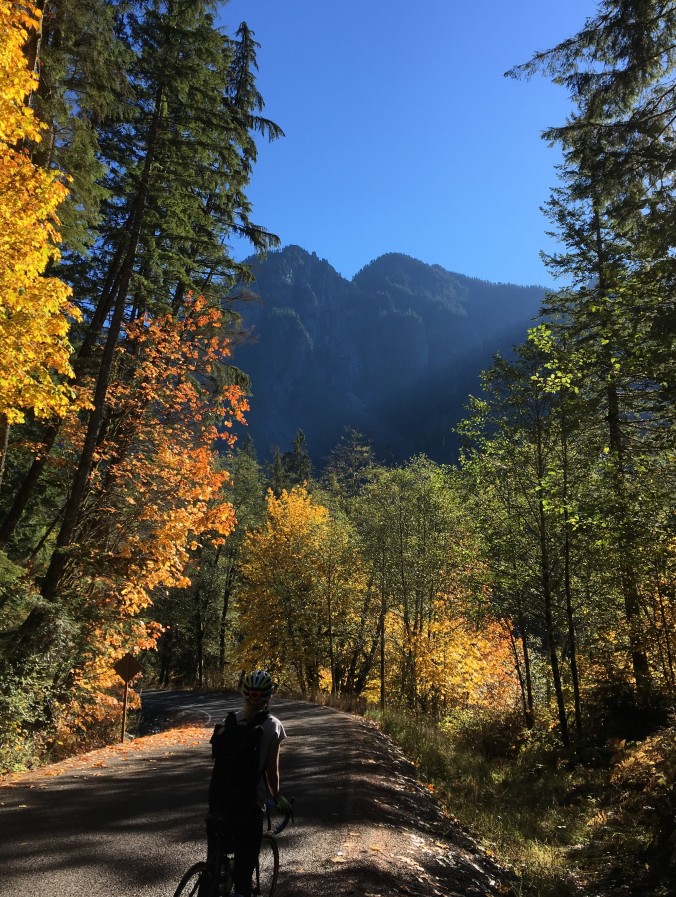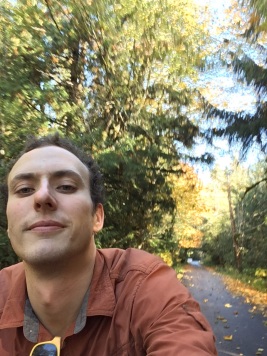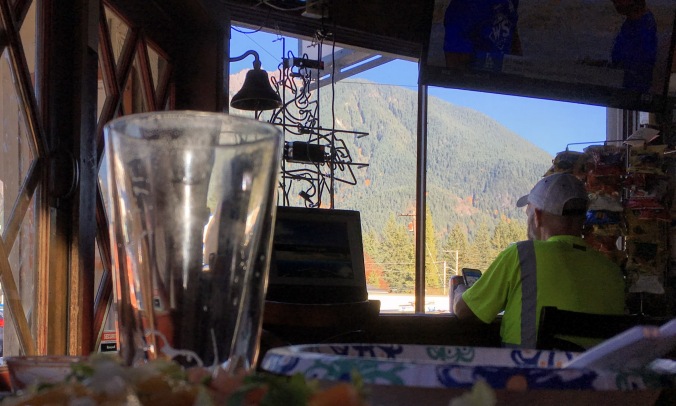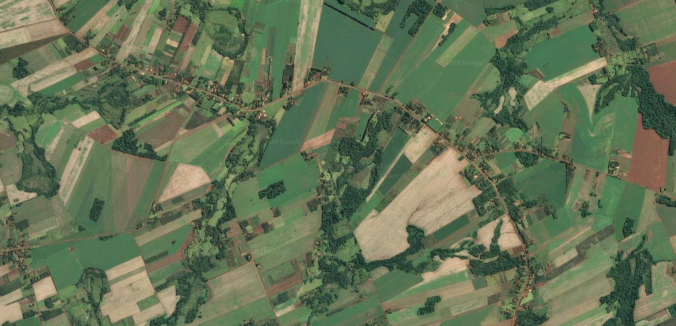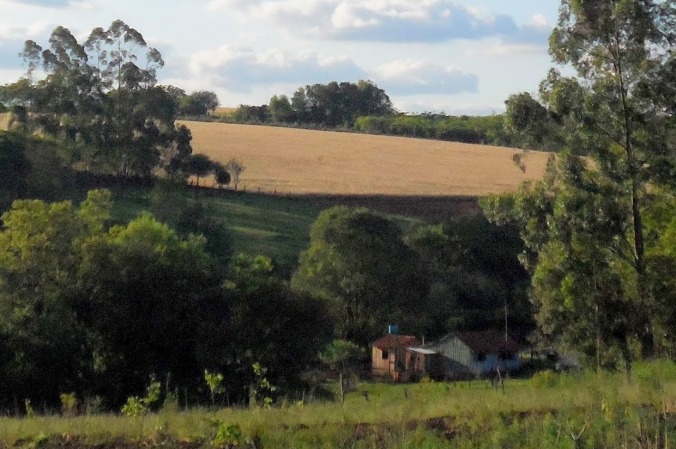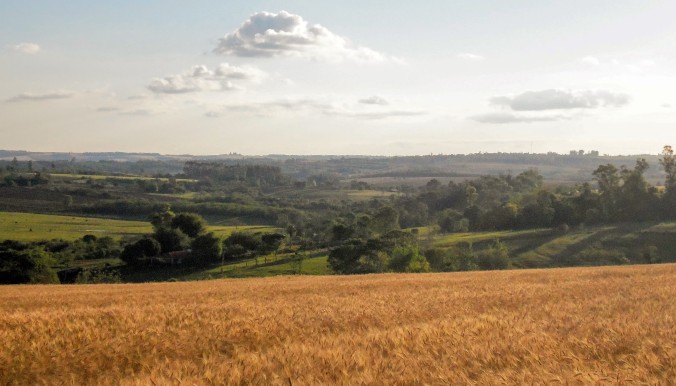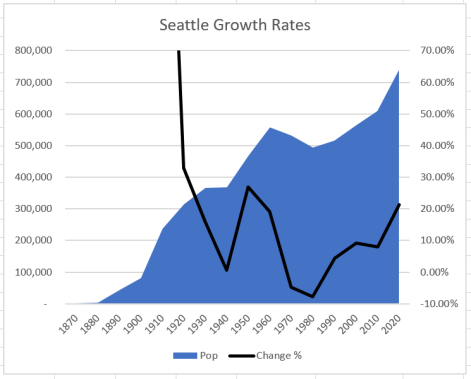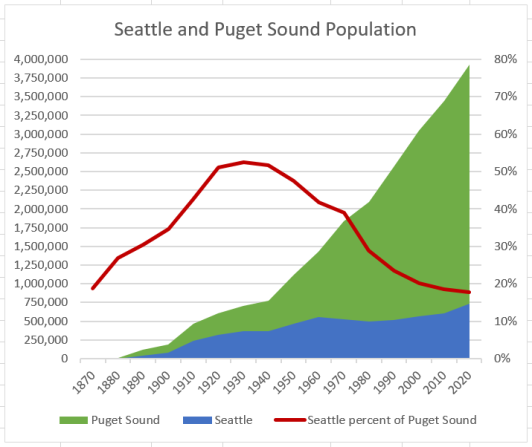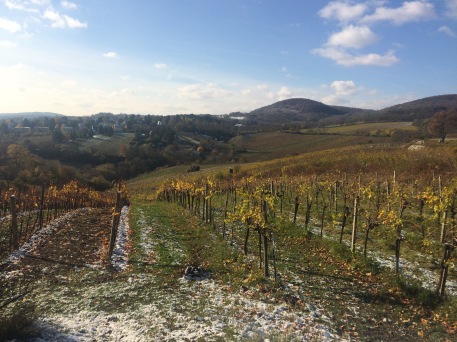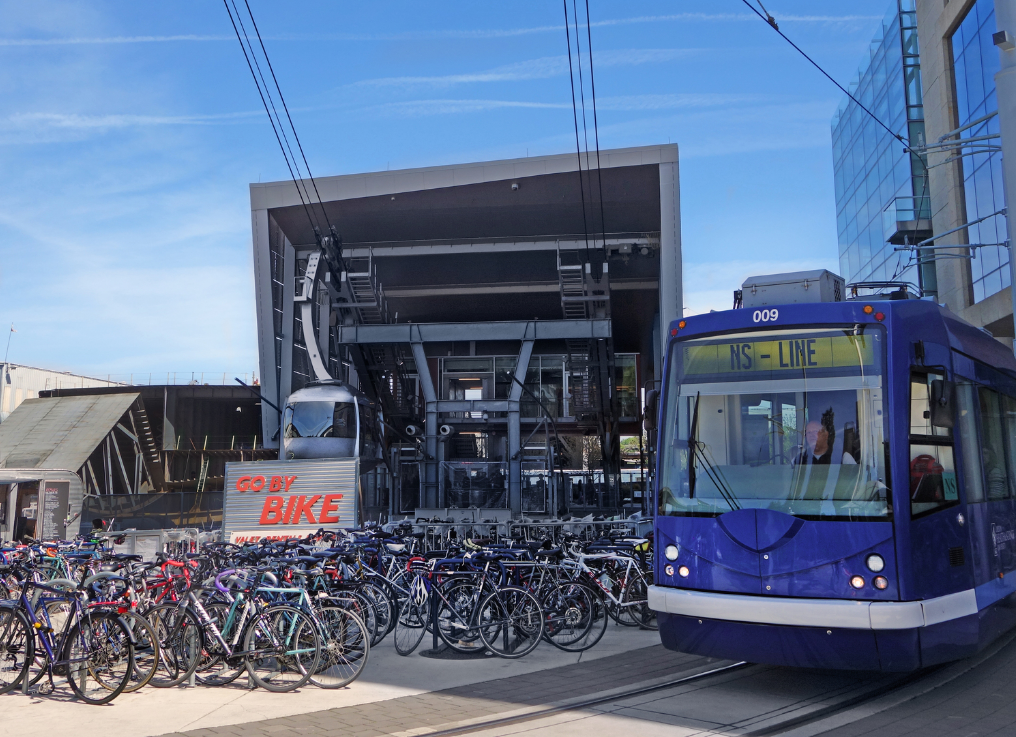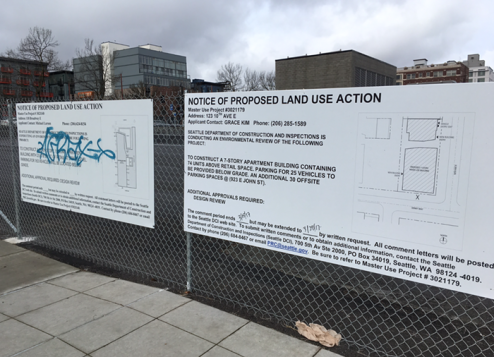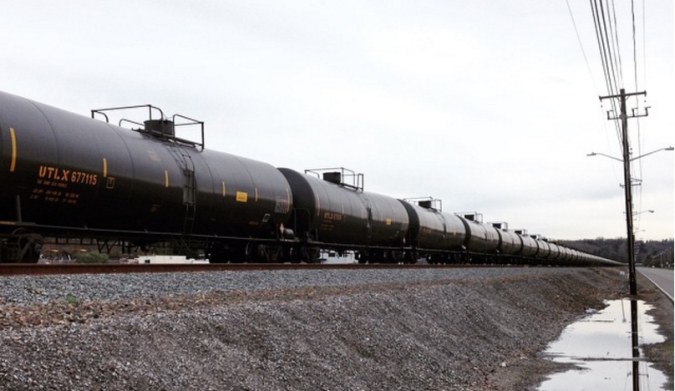Congestion pricing is bubbling to the surface of conversations about transportation across the country with greater and greater frequency. It inspires a lot of heated arguments, especially regarding its fairness and upon whom the impact would fall most heavily. Less often are the distribution of benefits investigated. Congestion pricing is one of the only strategies that can reliably reduce traffic congestion an urban core. All remaining road users therefore benefit from speedier travel – these are likely to include bus commuters, carpoolers, those who need to drive for their work, emergency vehicles, and, yes, high-income drivers who pay the fee. Ideally, the revenues of congestion pricing are used to further improve public transit and active transportation infrastructure, providing additional benefits for theses non-driving groups.
So who are these drivers, bus riders, and other urban travelers? City Observatory has done some excellent work in this regard, using census data to look at the income of commuters by transportation mode as well as by commute time for the Portland area. They found that rush hour car commuters have one of the highest median incomes of any commute mode. Bus commuters, those who walk or bike, and those who do not work at all have lower median incomes and would see most of the benefits of and none of the costs of a congestion pricing regime.
However I’m not aware of anyone who has done a similar analysis for Seattle. Gene Balk at Seattle Times looked at two specific income categories – those who earn less than $35,000 and those who earn $75,000 or more, and indeed, there were more transit riders in the latter category in Seattle than the former. However, there are a lot of working and middle-class people in Seattle that make between 35k and 75k. So, I decided to attempt to recreate City Observatory’s anaylsis for Seattle, using the incredible (free) IPUMS census research microdata tools.
Here’s what I found:
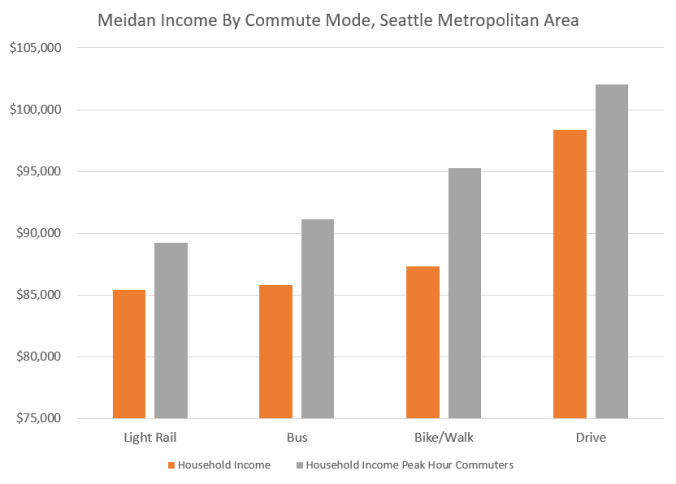
Just like in Portland, our drivers tend to be among the wealthiest commuters, and those who drive during rush hour (I filtered for those who leave home between 7:00am and 9:00am) are wealthier still. Obviously there is a great diversity in income among those who drive, as there is with the other commute modes and any demographic category.
However, when we talk about congestion pricing and equity we should be clear that it is a policy that:
- would disproportionately benefit lower income groups, especially bus riders,
- the costs of which would be borne by relatively higher income groups, ie peak-hour drivers,
- would reward sustainable commute choices such as transit, carpooling, or walking and biking (climate change is a civilization-threatening emergency),
- reduce the need for very expensive and destructive highway construction by using our existing infrastructure more efficiently, and
- reduce traffic delay for bus riders, emergency vehicles, working vehicles, carpools, and those for whom it is worth it to pay the fee.
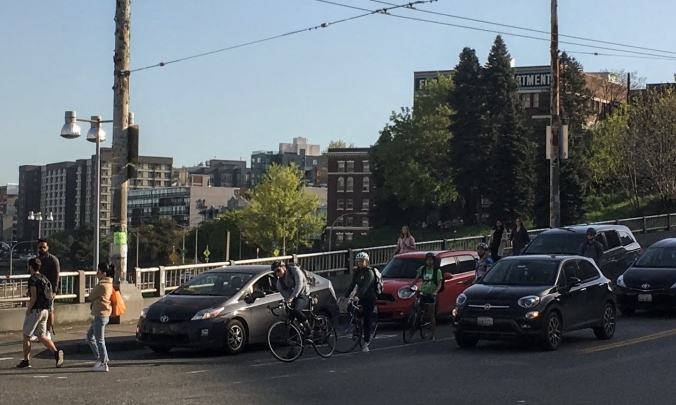 Pine St & Boren Ave during the morning commute. Photo by the author.
Pine St & Boren Ave during the morning commute. Photo by the author.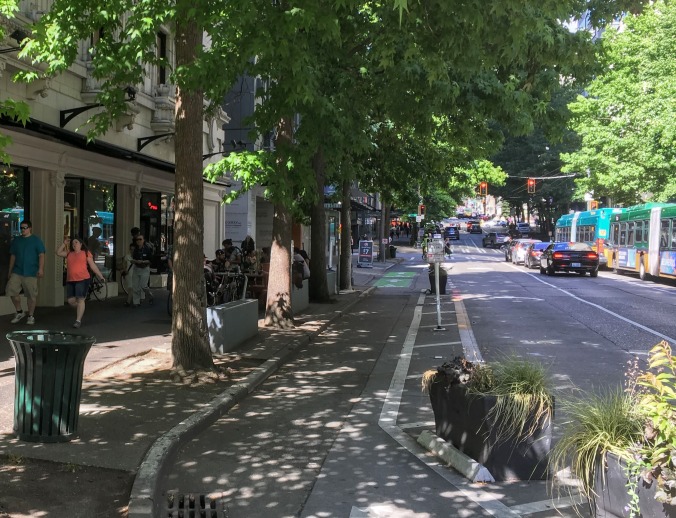 Existing protected bike lane at Pine & 5th Ave. Photo by the author.
Existing protected bike lane at Pine & 5th Ave. Photo by the author.